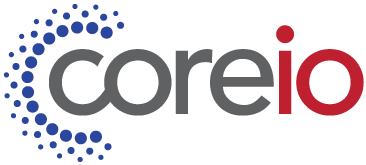I first learned about Computer Capacity and Performance Measurement from one of my employees when I worked for a major Canadian Financial Institution. It was a big IBM Mainframe shop and what I learned was invaluable when I first became a consultant and worked on a Government engagement. They were consolidating from five older IBM Mainframes to two new models, so determining the combined capacity requirements on fewer hosts was critical. And the newer model Mainframes were rated differently; from a capacity perspective. During the workload migration and consolidation to the new Mainframe at the new Government data center, the risk of not having enough capacity had to be mitigated by having some additional capacity on a 60-day loan from IBM. I was learning more about capacity management as time progressed.
I then did some consulting with another Canadian Financial Institution to help them bridge gaps in their Capacity Management Process – under the ITIL framework. I felt that I was becoming a subject matter expert as it relates to Capacity Management.
People Resources Within the Project Portfolio
 I’m now doing some work with another Financial Institution, and it involves Project Portfolio Management and looking at the Resource Capacity side of the equation. I am limiting my work to the management of people resources; the amount of work that the pool of resources can commit to given their workload and their work hours; not the broader use of the term “Capacity Management” that refers to equipment, technology, and network assets.
I’m now doing some work with another Financial Institution, and it involves Project Portfolio Management and looking at the Resource Capacity side of the equation. I am limiting my work to the management of people resources; the amount of work that the pool of resources can commit to given their workload and their work hours; not the broader use of the term “Capacity Management” that refers to equipment, technology, and network assets.
I discovered that this client was faced with too many projects and a backlog of implementations. They were having trouble resourcing them all. As the size, scope, and complexity of their Project Portfolio grew, greater visibility was needed to forecast the work. They wanted visibility into resource allocations so that resources could be maneuvered between activities.
Building a People Resource Capacity Management Process
Good practices dictate that you first categorize the work (i.e. mandatory, currency, refresh, transformation, remediation, or ongoing business as usual). I began building a Resource Capacity Management process by taking an inventory of all resources and aligning them to work categories and then defining them by role, skill set, and competency level. From some earlier functional organization research that I did, I remembered that for every 1.0 FTE of work, you needed 1.25 of actual FTE to take into consideration overhead / lost productivity (vacations, absenteeism, breaks, unproductive time, and distractions).
The next step in my process-build is to hold regular portfolio review meetings to review what’s in ‘the pipe’ and to have utilization data for all the employees. I am aligning the employees by work category, and by project, so that I can see the current utilization of employees and their skills, and then determining where there are shortages and surpluses.
The term “utilization of installed capacity” is commonly used in Computer Capacity Measurement. But I’m finding that it also applies to Human Resource Capacity Management. I watch for early emerging trends (such as spikes in demand), and growth rates for roles and skills. And similar to Computer Capacity Management, there are elements of demand management and complexity management that impact your capacity profile.

Recent Comments